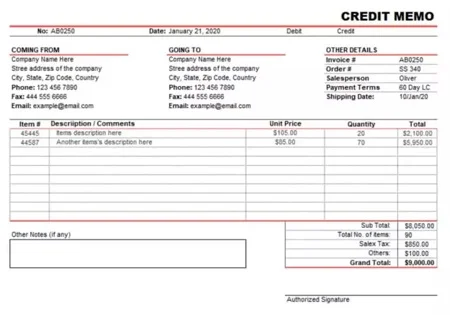Content
- List of Working Capital Formulas
- HOW TO CALCULATE OPERATING CASH FLOW
- What Is Working Capital? How to Calculate and Why It’s Important
- What Changes in Working Capital Impact Cash Flow?
- NEGOTIATE NEW SUPPLIER AGREEMENTS OR CHANGE SUPPLIERS
- Increase Your Inventory Turnover Ratio.
- INCENTIVISE EARLY PAYMENT WITH DYNAMIC DISCOUNTING
- Refinance to Turn Short-Term Debt into Long-Term Debt
- What is Negative Net Working Capital?

This should be one of the first steps of a business financial planning, even if the company already exists, since it is with this projection that all assets will be documented. Chris Rauen has been educating procurement and finance professionals on accounts payable automation and procure-to-pay transformation for more than 20 years. His articles have been featured in Treasury & Risk Management, Supply & Demand Chain Executive, Global Treasurer, Forbes ASAP, and more. In Economics from the University of California, Santa Barbara and a Professional Designation – Marketing from UCLA.
The balance sheet includes all of a company’s assets and liabilities, both short- and long-term. Working capital is used to fund operations and meet short-term obligations. If a company has change in net working capital enough working capital, it can continue to pay its employees and suppliers and meet other obligations, such as interest payments and taxes, even if it runs into cash flow challenges.
List of Working Capital Formulas
Having a positive number isn’t great if a company can’t collect on accounts receivable in a reasonable amount of time, which causes a gap in cash flow. In our working capital example above, ABC Enterprises would come out with a ratio of 1.3, indicating the business is healthy, having 1.3 times the amount of current assets to liabilities. The inventory on the balance sheet for this type of company is usually ordered months in advance—it can rarely be purchased and used to manufacture equipment fast enough to raise capital for a short-term financial crisis. These companies might have difficulty keeping enough working capital on hand to get through any unforeseen problems.
It’s useful to know what the ratio is because, on paper, two companies with very different assets and liabilities could look identical if you relied on their working capital figures alone. OWC is useful when looking at how well your business can handle day-to-day operations, while knowing how to work out NWC is useful in considering how your company is growing. Instead, you simply sell your unpaid invoices to a factoring company. The factoring company pays you right away and then waits for payment from the customer.
HOW TO CALCULATE OPERATING CASH FLOW
Working capital is a snapshot of a company’s current financial condition—its ability to pay its current financial obligations. Cash flow looks at all income and expenses coming in and out of the company over a specified time period, providing you with the big picture of inflows and outflows. Negative cash flow can occur if operating activities don’t generate enough cash to stay liquid.

When you refinance short-term debt with long-term debt, you can reduce your current liabilities. Refinancing can stretch out payment schedules and lower monthly payments, providing more cash for working capital. Inventory is a current asset, so it’s included in the net working capital formula.
What Is Working Capital? How to Calculate and Why It’s Important
Working capital is the money a business can quickly tap into to meet day-to-day financial obligations such as salaries, rent, and office overheads. Tracking it is key, since you need to know that you have enough cash at your fingertips to cover your costs and drive your business forward. What is a more telling indicator of a company’s short-term liquidity is an increasing or decreasing trend in their net WC. A company with a negative net WC that has continual improvement year over year could be viewed as a more stable business than one with a positive net WC and a downward trend year over year. If revenue declines and the company experiences negative cash flow as a result, it will draw down its working capital. Investing in increased production may also result in a decrease in working capital.
- This can increase your cash flow, which is a current asset, so your net working capital will improve.
- The working capital requirement of your business is the money you need to cover this time delay, and the amount of working capital required will vary depending on your business and its needs.
- Therefore, when a company is founded, one must estimate what fixed investment will be needed.
- If a company has enough working capital, it can continue to pay its employees and suppliers and meet other obligations, such as interest payments and taxes, even if it runs into cash flow challenges.
- The difference between the two is net is a total, but working capital gets reported as a ratio.
Capital, like data, drives the day-to-day operations of businesses around the world. Having a strong enough cash flow to cover your debts, keep your business humming, and invest in innovation requires careful financial management. Frankie has a healthy, positive net working capital and a good ratio of 3.
What Changes in Working Capital Impact Cash Flow?
The working capital calculation is quite simple; however, it does require some level of control of your company’s finances. You already understand that working capital is the amount of financial resources that a company needs to keep a business running. This definition is already enough for you to understand its importance to your company. Measuring working capital over a prolonged period can offer better financial insight than a single data point. To calculate the change in working capital, you must first calculate the working capital for two points in time. From there, subtract one working capital figure from the other, giving you the difference between them.
What is the formula for net working capital in Excel?
Working Capital Formula in Excel (With Excel Template)
We need to calculate Working Capital using Formula, i.e. Working Capital= Current Assets – Current Liabilities.
If your inventory is slow-moving or inefficiently managed, it can extend the days inventory outstanding in your operating cycle, which can significantly impact the net working capital you have available. By optimising inventory processes and turnover you can increase your net working capital. For example, consider the following sample list of a company’s current assets and liabilities. It is known that every type of company needs resources (money) to maintain the fluidity of its activities and, consequently, to ensure that it remains active in the market.
NEGOTIATE NEW SUPPLIER AGREEMENTS OR CHANGE SUPPLIERS
Working capital represents the difference between a firm’s current assets and current liabilities. Working capital, also called net working capital, is the amount of money a company has available to pay its short-term expenses. The balance sheet lists assets by category in order of liquidity, starting with cash and cash equivalents. It also lists liabilities by category, with current liabilities first followed by long-term liabilities. Create subtotals for total non-cash current assets and total non-debt current liabilities. Subtract the latter from the former to create a final total for net working capital.
You might make payments to suppliers on receipt, or have payment terms of seven, ten or 14 days. The cash manager will need to monitor the increase in net working capital. It has absorbed almost all of the positive operating cash flow for the year. An increase in a company’s working capital decreases a company’s cash flow. When you determine the cash flow that is available for investors, you must remove the portion that is invested in the business through working capital.
Increase Your Inventory Turnover Ratio.
If you hold assets of 125,000 and liabilities of 100,000, your net working capital is 25,000. The difference between the two is net is a total, but working capital gets reported as a ratio. Net Zero Working Capital indicates your company’s liquidity is sufficient to meet its obligations but doesn’t have the cash flow for investment, expansion, etc. Accounts receivable days, inventory days, and accounts payable days all rely on sales or cost of goods sold to calculate.
